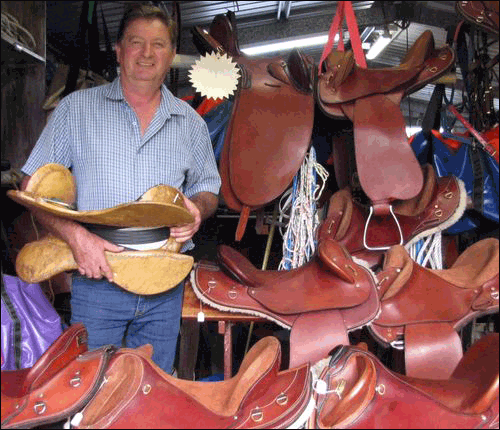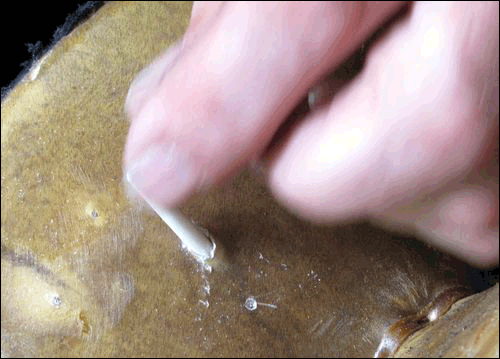In Australia, most members of the livestock trade, such as horse ranchers, are equipped with an RFID reader, thanks to the proliferation of radio frequency identification tags embedded in cattle and horses. Not only do horse owners and handlers carry readers, but so does the police force that works in that industry. So when saddle maker Clint Gollan met Tim Scott, the sales and marketing manager at RFID firm Datamars Australia, at an agriculture trade show held last year in Cloncurry, in the state of Queensland, the duo came up with another way in which the technology could be used: to thwart the theft of the handmade saddles produced by Gollan’s company.
Paul Gollan Saddlery, located in Toowoomba, Queensland, is a family-owned business that sells saddles crafted by hand, as well as bridles, horse rugs, whips and other accessories.
Handcrafted saddles cost $3,800 or more apiece, and due to their high price, they are at risk for theft. In the event that police seize a stolen saddle, it can be difficult to determine its owner. Although each of his company’s saddles bears a metal plate with an engraved unique serial number, Paul Gollan says, these plates can be removed by thieves, making it nearly impossible for police to identify and prove ownership.
“The use of the RFID chips has now made identification of our saddles much easier,” Gollan explains. The saddle maker has begun inserting a Datamars T-IP 8010 FDX-B or 30-mm HDX 134-kHz low-frequency (LF) polymer RFID tag, complying with the ISO 11784 standard, into the tree (frame) of every saddle it produces. The tag’s unique ID number is then linked to that saddle’s serial number in Paul Gollan Saddlery’s database. Using a tag encased in polymer, Scott says, ensures the tag will not be destroyed by the wear that a saddle experiences while on a horse, whereas a glass RFID tag (commonly used for livestock tracking) could become broken under such circumstances.
Once the tag is inserted, Scott notes, most people handling the saddle would be unaware that it was there at all. “As it is purchased, used and sold to others, the tag is simply dormant in the saddle itself,” he states. “But if a saddle is stolen and recovered, the origins of the saddle can be detected instantly.”
Police “stock squads” that cover regional areas carry RFID readers to identify missing or stolen cattle, and can simply read the saddle’s tag, after which Paul Gollan would need to identify its owner. In addition, owners could opt to track their own saddles, based on the IDs encoded to the tags. According to Scott, Australian companies are currently developing cloud-based ownership databases for tracking saddles and other items, and customers have expressed an interest in utilizing such services. In that case, a saddle owner could communicate directly with police in order to identify a missing saddle, rather than needing to request a purchase history from Paul Gollan Saddlery’s database, based on the tag’s RFID number.
Since launching the RFID solution earlier this year, the saddlery now inserts an RFID tag into every new saddle it crafts, recording the tag’s unique ID number in the company’s database. With each sale, Gollan stores the customer’s name and the date of purchase and links that data to the saddle’s ID number by interrogating its tag using a Datamars Bluestick handheld reader.
Just knowing that the RFID chip is in the saddle has elicited interest from buyers, Gollan reports, since it enables them to confirm their own ownership.



